The Domaine de Kerguehennec's Humble Beginnings
Versailles Palace, on the outskirts of Paris, is a place of incredible splendor and opulence. And what do the great Versailles and the Domaine de Kerguehennec, near Bignan, have in common? Kerguehennec is also called the "Versailles of Brittany". It is easy to see why. Like Versailles, Kerguehennec shows off an immense amount of wealth and showcases power and political influence.
You wouldn't guess it from its humble beginnings though. Up until the 18th century, a simple medieval manor house stood on the site, perpendicular to the current castle's location. At that time, nothing yet hinted at the affluent palace the little manor house would become.
We have visited Kerguehennec quite a few times now and every time, I discovered something new. It is a very special place with a history going back to the 15th century (and earlier) and many unique places to explore. Unlike the fortified castles, the Hogguers did not build it for war or defense. They built it simply for pleasure, luxury, and comfort. You can pick up a free map at either entrance, to get an overview of the estate.
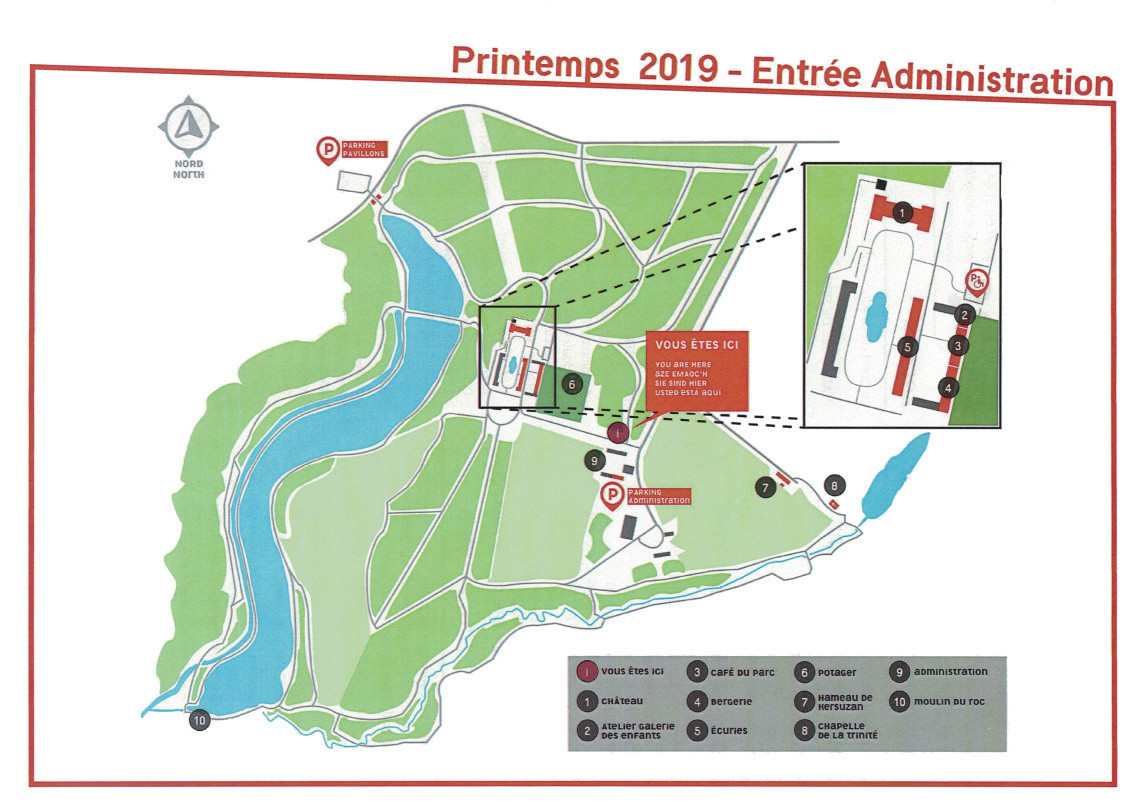
The estate is splendid and you can spend an entire afternoon just exploring the gardens, arboretum, outbuildings, and lakes. You can spend just as much time wandering through the inside of the castle. The first floor is currently closed for renovations, but I will post an update in the fall, when the works are finished.
Get ready to be amazed, as we explore the Domaine de Kerguehennec!
Visit the Domaine de Kerguehennec's website HERE.
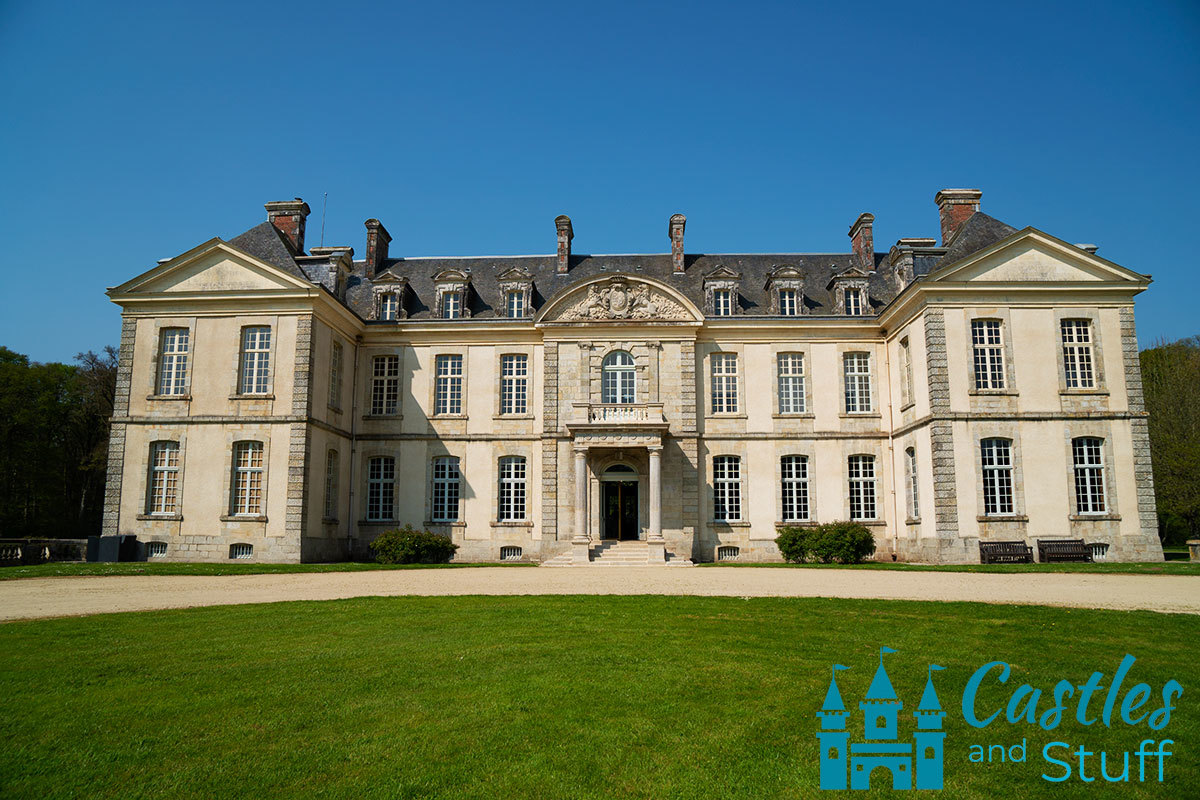


Read all the way to the end and then take our fun quiz!
The Hogguer Brothers
A Great Investment
The Domaine de Kerguehennec is located close to the town of Bignan and the lands belonged to the Viscounty of Bignan. Toward the end of the 17th century, a pair of brothers from Switzerland rose through the ranks of the Compagnie des Indes, the French East India Company. Daniel and Laurent Hogguer lived in Paris, but worked out of Lorient. They became incredibly wealthy from the cloth trade and started looking for an operational base close to Lorient. They visited Kerguehennec a few times and eventually decided it would make a great home base.
Together with their brother-in-law, Baron Reding, Daniel and Laurent acquired Kerguehennec in 1703. Laurent preferred to commute back and forth to Paris, so Daniel became the Viscount of Bignan after they purchased the Domaine de Kerguehennec. At some point, Baron Reding mysteriously (or conveniently) disappeared, leaving Daniel and Laurent as the sole owners of Kerguehennec.
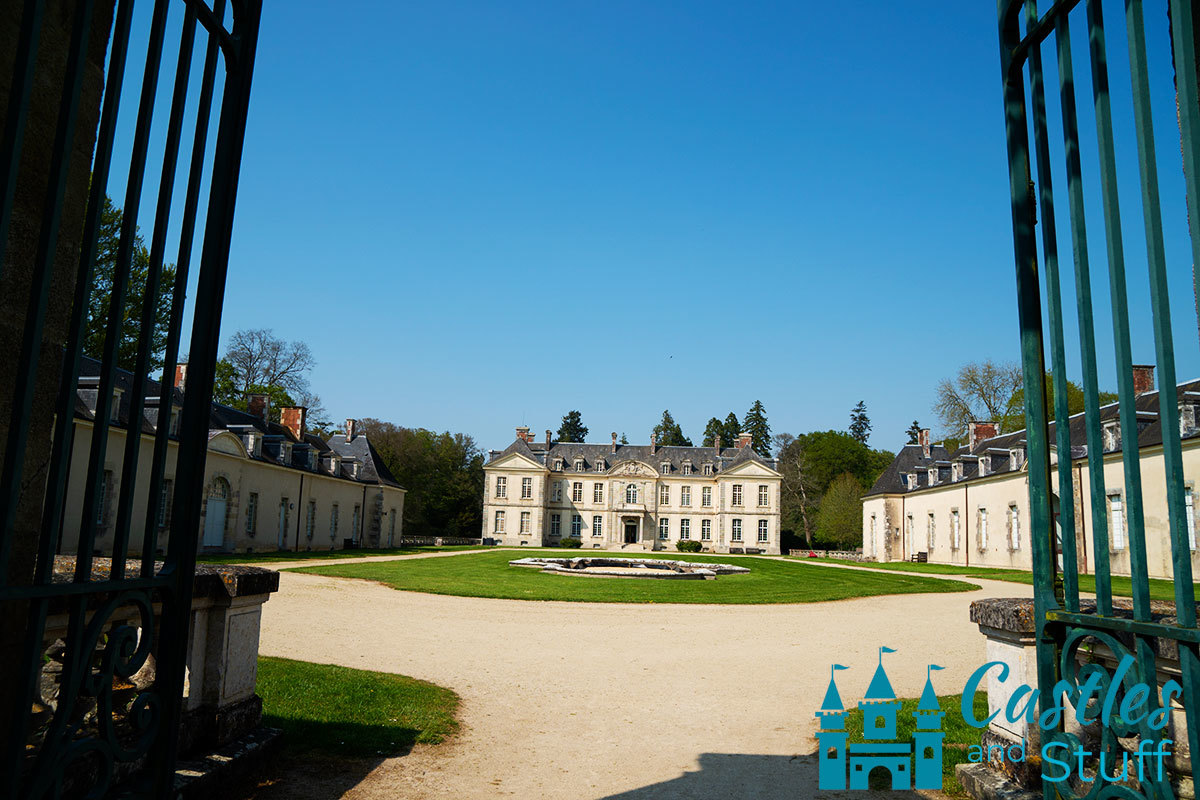

They lost no time in commissioning the construction of a splendid palace. They tore down the old manor house and works began on an abode fit for a Viscount. Construction works included a walled garden to supply vegetables and herbs, as well as an orchard. The outbuildings housed castle staff, carriages, horses, sheep, a forge, and dog kennels. Surrounding lands provided game for hunting and space to plant crops to supply the castle.
Since wood was in great demand for building works of the French King and shipbuilding for the French navy, the King of France technically owned all forests in France. The Hogguer brothers received special permission from the King to be able to cut and sell some of their wood at Kerguehennec. By all accounts, the brothers were able to supply the castle autonomously and were even able to turn a profit on surplus food and wood.
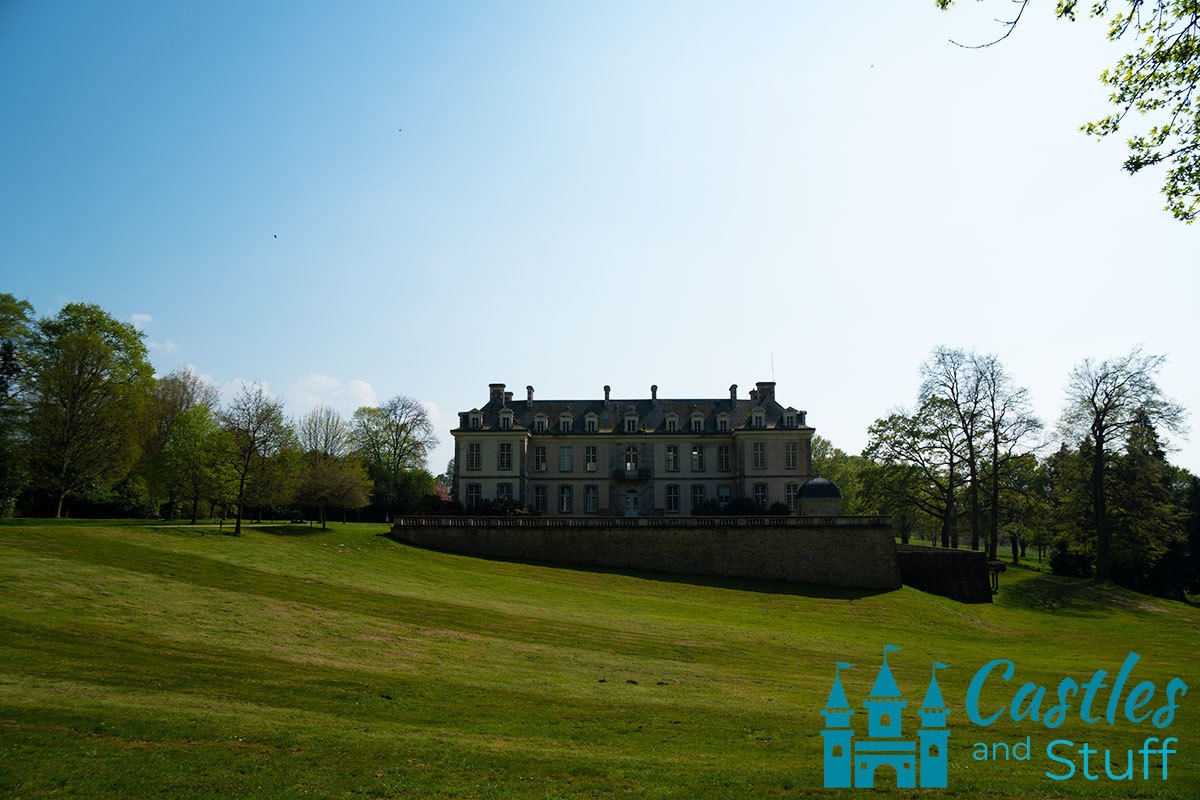
Leaving the Domaine de Kerguehennec
The first problems became apparent right from the beginning. Daniel and Laurent were Protestant and found it difficult to integrate into a Catholic society. They were not very well liked and were not accepted by the local nobility. Although they stayed at Kerguehennec for several generations, the religious differences isolated the families significantly.
Combined with financial difficulties when Daniel and Laurent made some bad investments, the Hogguers eventually had to sell the Domaine de Kerguehennec and return to Paris. The estate passed through several hands, until the Comte de Lanjuinais became the owner in 1872 by a stroke of luck. He had an eye on the estate for some time and had fallen in love with its beauty. When his cousin inherited the property, he was able to convince him to sell it.
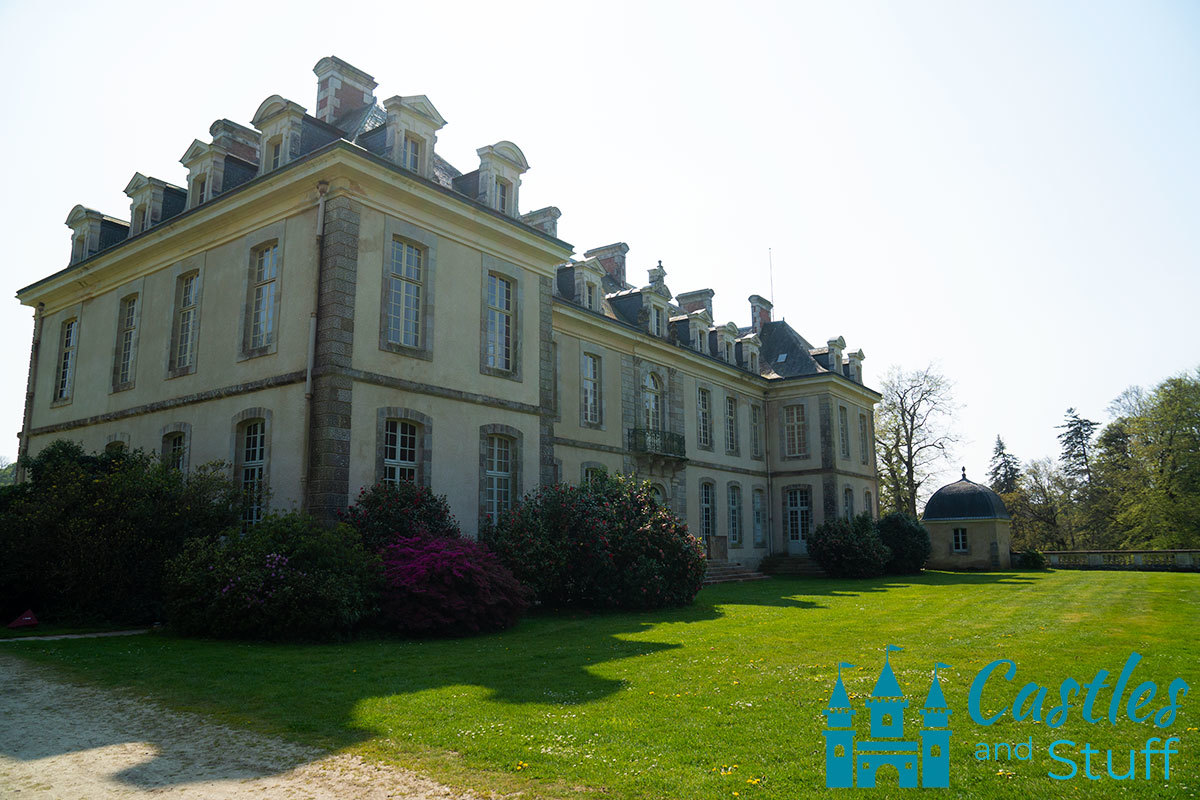
The Domaine de Kerguehennec's Golden Age
Paul-Henri de Lanjuinais was the 3rd Count of Lanjuinais. He was part of the wealthy, local nobility and an important political figure. His purchase of Kerguehennec was strategic, as he needed a local power base. But, Kerguehennec remained his passion project until his death. He was in love with the estate and its lands and spent great sums of his money on changing Kerguehennec into what you see today.

Image Source: Par Inconnu — mairie-bignan.fr, Domaine public, https://commons.wikimedia.org/w/index.php?curid=16522968
Paul-Henri de Lanjuinais renovated or created all of the buildings, the model farm, as well as the parkland. He completely changed everything the Hogguer brothers had built. The Count modernized the electrical system, the water supply, and the central heating system, bringing the estate to the forefront of technological advances at the time. He also ensured the visual splendor of Kerguehennec and firmly ensconced it as the "Versailles of Brittany".

The Domaine de Kerguehennec Outbuildings
To function properly, a castle needs some or many outbuildings that serve the every day needs of the owners and castle workers. Many of the outbuildings are dedicated to food supply and storage, while others serve to house animals and equipment. Kerguehennec has a number of outbuildings to help it run smoothly and provide a high level of comfort to the count and his family.
You can still visit all of these buildings today. As you make your way to all of them, you get a sense of how large the estate actually is. It used to comprise over 4,000 acres of land at the time the Hogguer brothers bought it. Today, 350 acres still belong to the estate.
The Farm
Food supply was one of the main tasks a castle had to successfully master. It was costly to feed the owners and all the staff and workers, so most castle owners tried to produce their food within their estate. Kerguehennec always had a farm (there were several farms located within the estate), but it was not until 1874 that the Count of Lanjuinais relocated the farm productions to where you see them today.

He commissioned a set of dedicated buildings for the farm workers, the equipment, and animals. These buildings are called the Model Farm and are located near the parking lot. They now house the estate's administration. The farm's main tasks were to process vegetables and meats, as well as dairy and wool, to supply Kerguehennec.
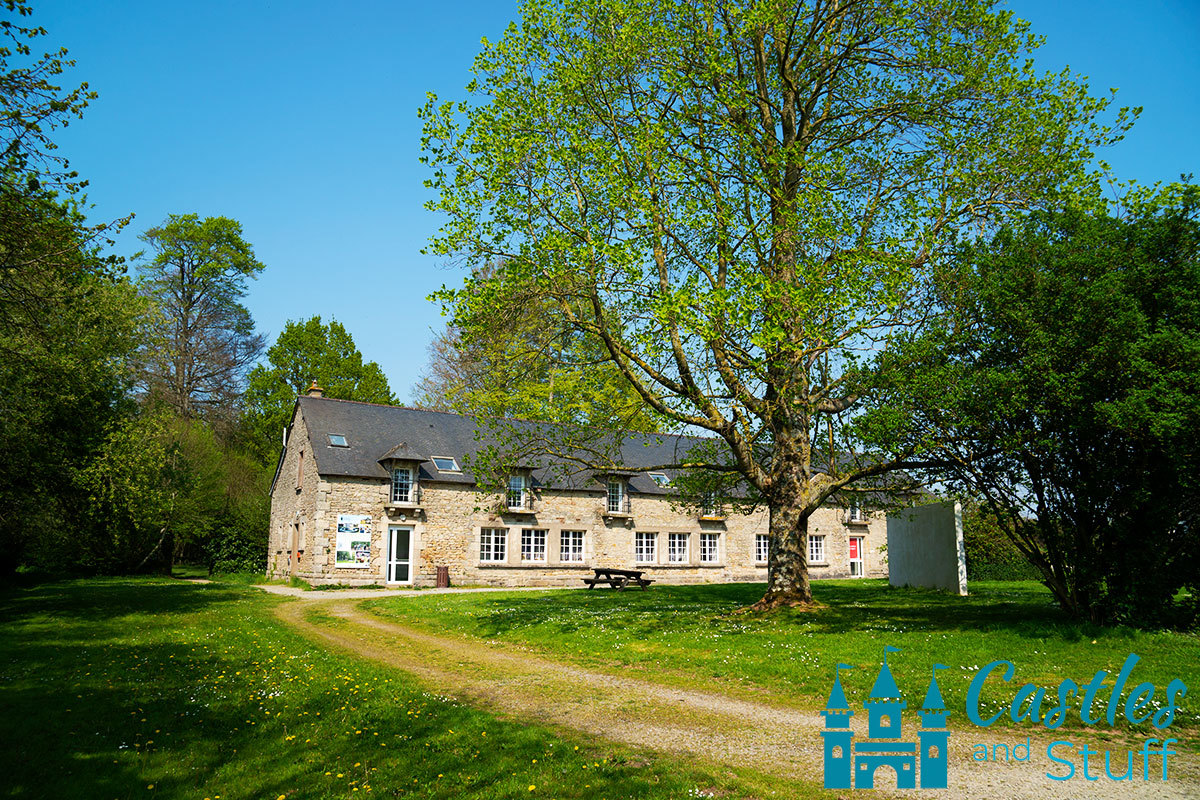
The Mill
Several mills also belonged to the Kerguehennec estate. Out of the three mills on record, the Moulin du Roc was the largest and most important. You can find the mill at the southern end of the lake. It was renovated and refitted around 1786 and supplied flour to the estate. Although it worked because of the water supplied by the river Claie, it was also fitted with wind blades. In times of drought, the mill could then function on wind power.

The Morbihan Department actually created the two lakes you see today in the 1970s. Before then, the castle bordered wetlands and marshes on the west. The estate owners did not really know what to do with these areas and just left them as they were. It was too expensive to drain them and use them for farming and it was also too costly to construct a lake. So, they just had to deal with drought sometimes and got around the problem by giving their mill a dual function.

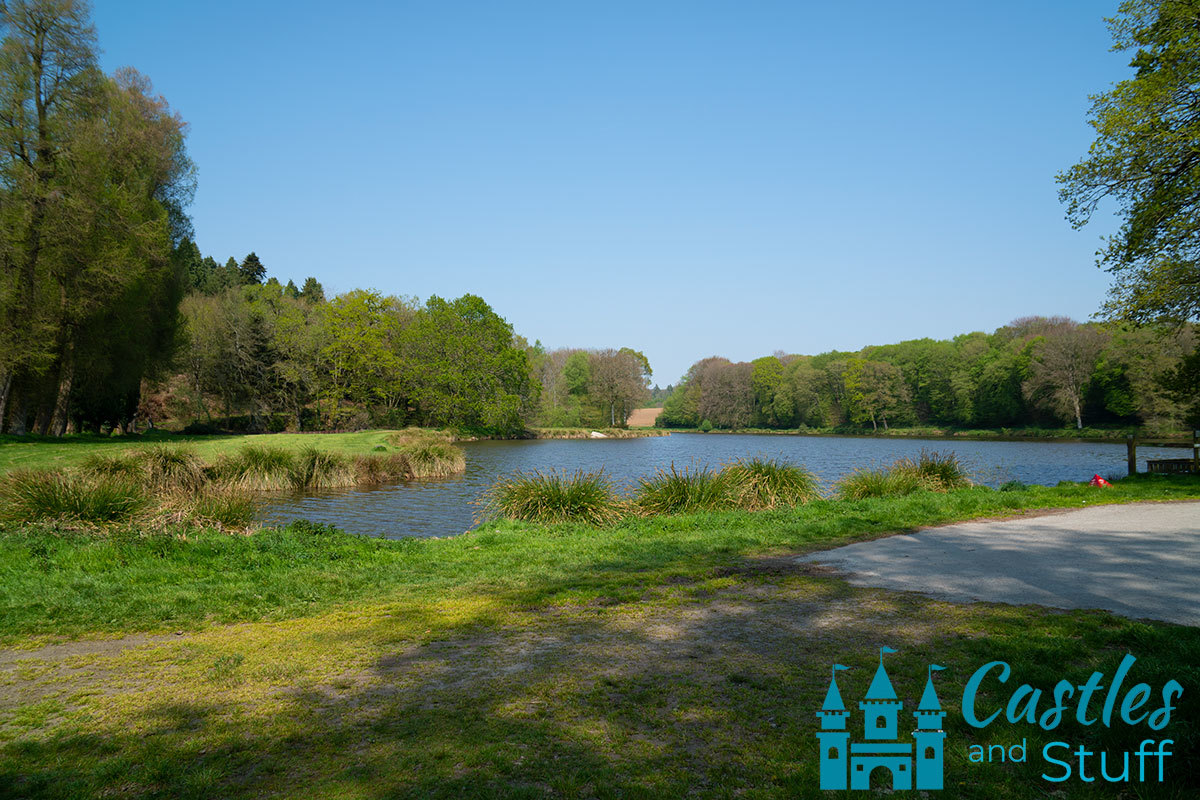
The Walled Vegetable Garden
Kerguehennec's food was grown in a large, walled garden, complete with glass-covered greenhouses. The Count of Lanjuinais loved exotic fruits and plants and the greenhouses provided a great place to experiment with fruits that did not grow well in Breton climate.
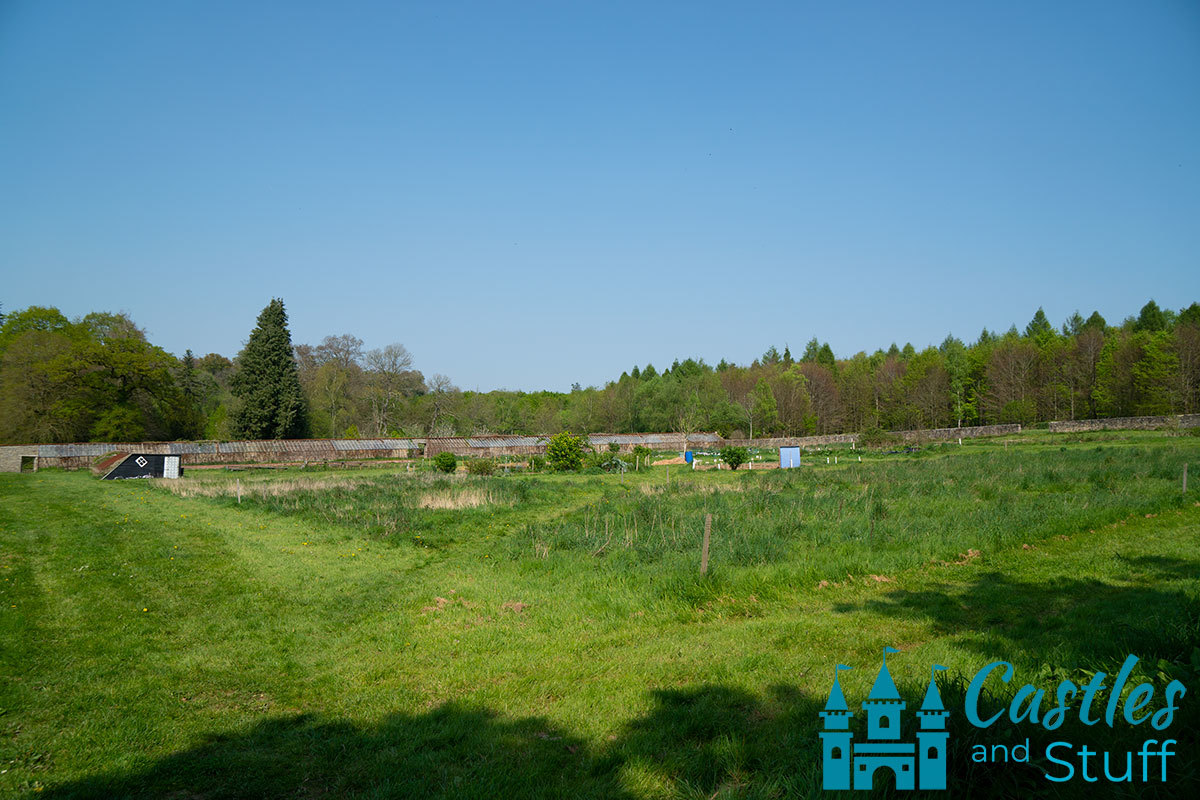

The garden also connects to the orchard, which is visible, but not accessible to the public.

The Forge and Orangerie
As you reach the castle, a large, glass-covered Orangerie sits right beside the walled garden. The estate heated the Orangerie year-round and the Count grew plants like palm trees and orange trees inside. The Orangerie shares a wall with the kennels on the other side, which were also heated. This ensured the hunting dogs were always comfortably housed.


The building that now houses the Café used to stable sheep and also provided lodging for castle workers. You can see the 13th century well in the court yard, which is the oldest remaining structure of the entire estate. Just behind the well are the remains of the forge.


The Domaine de Kerguehennec's Staff Quarters and Stables
The two buildings stretching out in front of the castle served several different purposes.
Looking at the castle, the building on the left includes the private family chapel (not accessible to the public), as well as a cider press, the electrical generator equipment, and storage for fire wood.
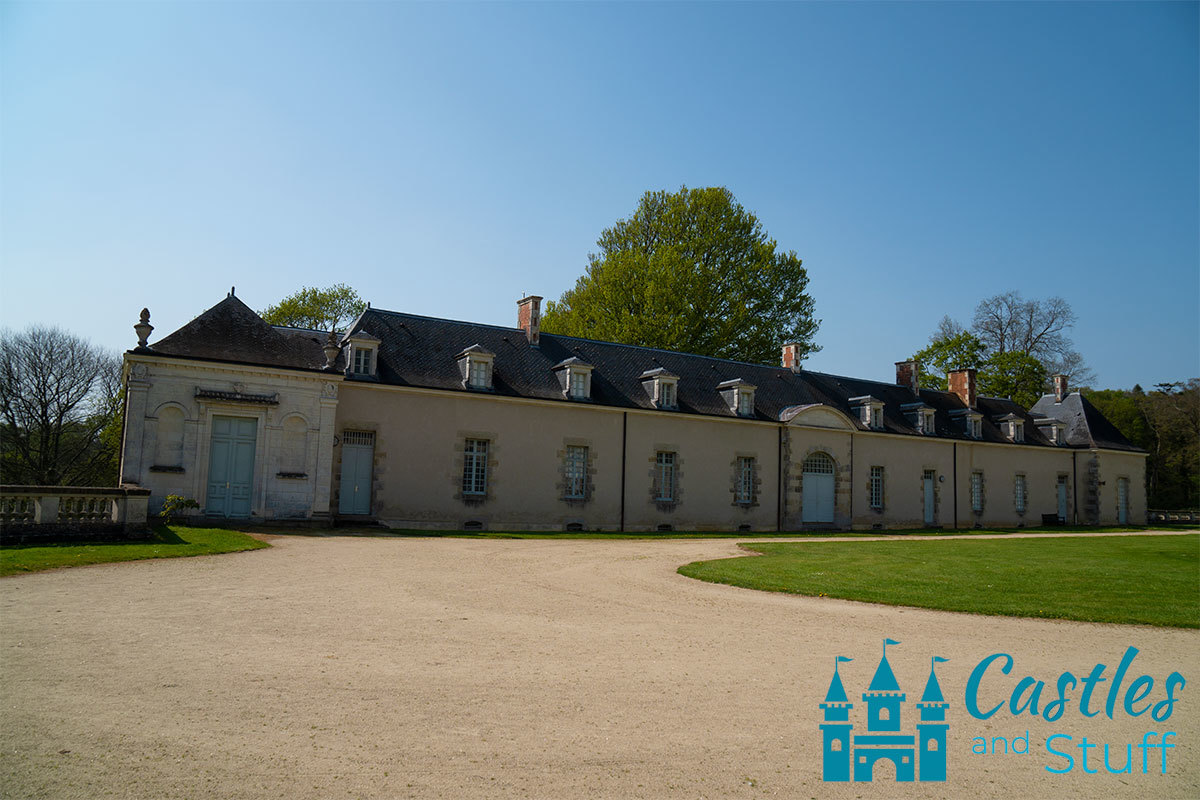

The building on the right was the stables and storage for the carriages, as well as lodging for the castle workers.

The Cistern and Laundry Pool
Some time before the Count of Lanjuinais bought Kerguehennec, the estate started having problems with the water supply. The two wells did not contain enough water to service the castle owners, the staff, the numerous bathrooms, the kitchens, and the mountains of laundry.
To solve the water problem, the Count of Janzé developed an ingenious system. He built a cistern at nearby Cléhury, harnessing the local springs. With the help of gravity, the new system piped water from the pressurized cistern to the castle and outbuildings. The water shortage was successfully averted.


The cistern system also supplied the laundry pool, located just above the lakes. Being a laundress at an estate was a hard job and required difficult, physical labor in all weather conditions. The large, outside pool was much more convenient than a small wooden tub. The cistern system supplied running water and allowed the laundresses to work on the castle's dirty laundry in an open space. After completing the day's washing, the laundresses opened the pool and drained the dirty water into the marshes.

The Domaine de Kerguehennec's New Entrance
Once the Count of Lanjuinais bought Kerguehennec, his singular mission was to renovate the property and add "prestige". Since he entertained many important political guests at the estate, it needed to reflect his status and wealth.
One of these "prestige" projects was the new entrance at the north end of the lake (marsh). The Domaine de Keguehennec only had one entrance that led along the walled garden and then turned right toward the castle. Since this access did not showcase the size of the estate and its parkland, the Count had a second entrance designed. Guests would arrive in their carriage at two beautiful pavilions, framing a large gate between them.


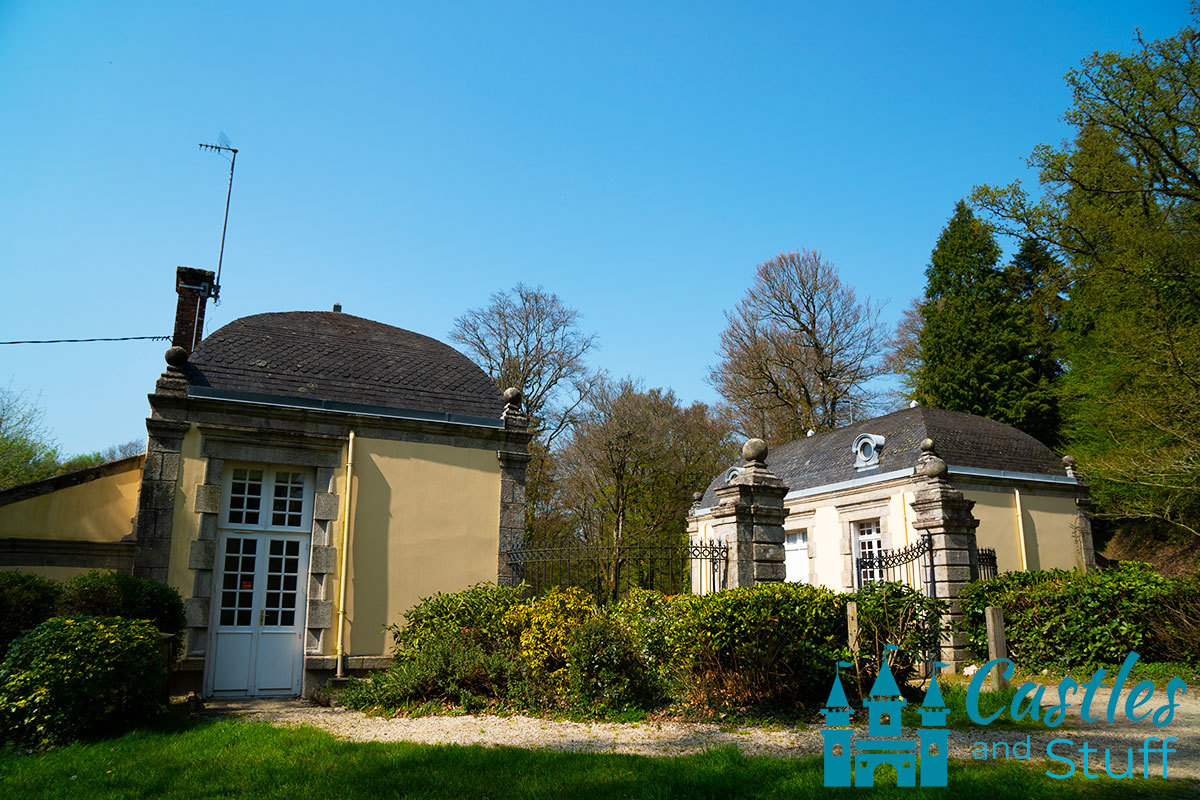
The access would lead through the gate, above the marshes and through the parkland. Guests continued through the forest and arrived at the back of the castle. The path then continued around the right side of Kerguehennec, eventually arriving at the stunning front portal. Spending such a long time riding through the Kerguehennec estate ensured guests were in awe of the beautifully-designed park and definitely felt the impressive grandeur and size of the estate.


Digging Up the Courtyard
Another of the Count's "prestige" projects was the new front entrance. The Hogguer brothers had constructed a simple front door for their castle, facing the main courtyard. This definitely did not shout "prestige" and needed to be re-vamped immediately.
Unfortunately, there was no room to build a bigger entrance portal in the way the Count had envisioned. He had the space to the left and the right, but there was no depth to construct several steps. So, what could the Count do? Simple!
If you're a Count and money is no problem, you just have your staff dig out the entire courtyard by 1 meter. Done! This created the depth necessary to construct the imposing front steps and the Count's "prestige" bumped up by a couple of notches.
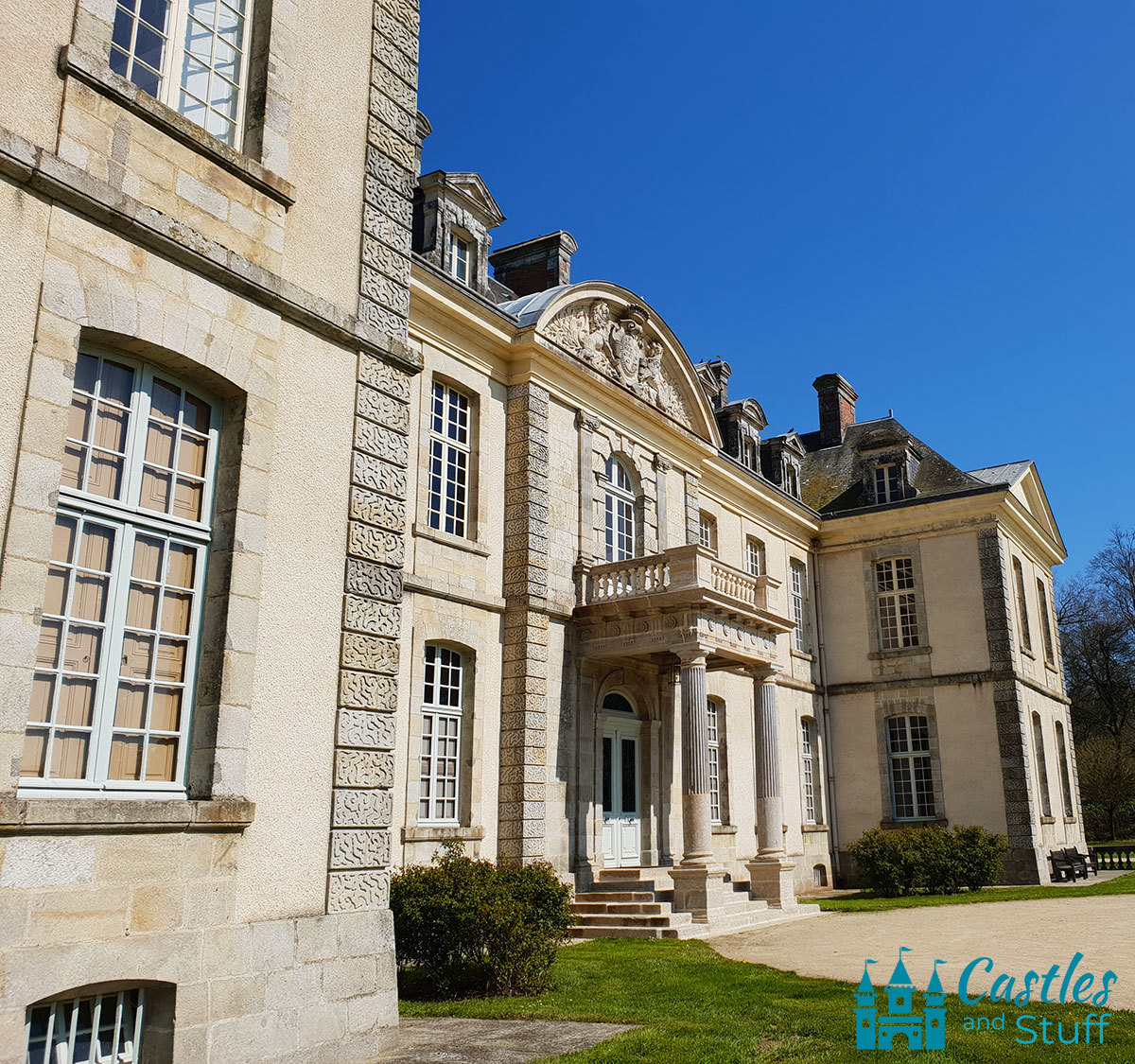

Sale to the Morbihan Department
The Domaine de Kerguehennec stayed in the Count's family for two more generations. It passed through his daughter to his granddaughter, the Comtesse Pierre d'Humières. It was his granddaughter, who took the decision to sell the estate to the Morbihan Department in 1972.
The department has undertaken continuous renovations to upkeep the property since then and also installed an art museum and a sculpture park at the estate. The decision to turn the marshes into two lakes was made shortly after the acquisition of the property.


You can visit the the Domaine de Kerguehennec most days of the year. It hosts frequent exhibits, art workshops, and events. I was so impressed by the knowledgeable guides who work at Kerguehennec. It is a place I would visit again any time. The grounds are peaceful and welcoming. The castle itself is a reminder of a golden age that produced stunning architecture and spectacular gardens and parks.
Sources
https://www.kerguehennec.fr/
https://fr.wikipedia.org/wiki/Château_de_Kerguéhennec
Herbaut, Claudine and Nourry, Louis Michel. Kerguéhennec Architecture et Paysage(s), Éditions Locus Solus, 2016.

